London: C. J. CLAY and SONS ,
CAMBRIDGE UNIVERSITY PRESS WAREHOUSE,
AVE MARIA LANE,
Glasgow: 50, WELLINGTON STREET.
Leipzig: F. A. BROCKHAUS.
New York: THE MACMILLAN COMPANY.
Bombay: E. SEYMOUR HALE.
By
John Willis Clark , M.A., F.S.A.
Registrary of the University
and formerly Fellow of Trinity College, Cambridge
CAMBRIDGE
at the University Press
1901
Cambridge:
PRINTED BY J. AND C. F. CLAY,
AT THE UNIVERSITY PRESS.
FRANCISCO AIDANO GASQUET
MONACHO BENEDICTINO
D.D.
MAGISTRO DISCIPULUS
PREFACE.
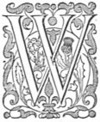 When engaged in editing and completing The Architectural History of the University and Colleges of Cambridge, I devoted much time and attention to the essay called The Library. The subject was entirely new; and the more I looked into it, the more convinced did I become that it would well repay fuller investigation than was then possible. For instance, I felt certain that the Customs affecting monastic libraries would, if one could only discover them, throw considerable light on collegiate statutes relating to the same subject.
When engaged in editing and completing The Architectural History of the University and Colleges of Cambridge, I devoted much time and attention to the essay called The Library. The subject was entirely new; and the more I looked into it, the more convinced did I become that it would well repay fuller investigation than was then possible. For instance, I felt certain that the Customs affecting monastic libraries would, if one could only discover them, throw considerable light on collegiate statutes relating to the same subject.
The Architectural History having been published, I had leisure to study libraries from my new point of view; and, while thus engaged, I fortunately met with the admirable paper by Dom Gasquet which he modestly calls Some Notes on Medieval Monastic Libraries. This brief essayit occupies only 20 pagesopened my eyes to the possibilities that lay before me, and I gladly place on record here the debt I owe to the historian to whom I have dedicated this book.
When I had the honour of delivering the Rede Lecture before the University of Cambridge in June 1894, I attempted a reconstruction of the monastic library, shewing its relationship, through its fittings, to the collegiate libraries of Oxford and Cambridge; and I was also able, following the example set by Dom Gasquet in the above-mentioned essay, to indicate the value of illuminated manuscripts as illustrating the life of a medieval student or scribe. In my lectures as Sandars Reader in Bibliography, delivered before the University of Cambridge in 1900, I developed the subject still further, extending the scope of my enquiries so as to include the libraries of Greece and Rome.
In writing my present book I have availed myself freely of the three works above mentioned. At the same time I have incorporated much fresh material; and I am glad to take this opportunity of stating, that, with the single exception of the Escrial, I have personally examined and measured every building which I have had occasion to describe; and many of the illustrations are from my own sketches.
I call my book an Essay, because I wish to indicate that it is only an attempt to deal, in a summary fashion, with an extremely wide and interesting subjecta subject, too, which might easily be subdivided into separate heads each capable of more elaborate treatment. For instance, with regard to libraries in Religious Houses, I hope to see a book written, dealing not merely with the way in which the books were cared for, but with the subjects most generally studied, as indicated to us by the catalogues which have survived.
A research such as I have had to undertake has naturally involved the co-operation of numerous librarians and others both in England and on the Continent. From all these officials I have experienced unfailing courtesy and kindness, and I beg them to accept this collective expression of my gratitude. To some, however, I am under such particular obligations, that I wish to mention them by name.
In the first place I have to thank my friends Dr Jackson of Trinity College, Dr Sandys of S. John's College, Dr James of King's College, and F. J. H. Jenkinson, M.A., University Librarian, for their kind help in reading proofs and making suggestions. Dr Sandys devoted much time to the revision of the first chapter. As my work deals largely with monastic institutions it is almost needless to say that I have consulted and received efficient help from my old friend W. H. St John Hope, M.A., Assistant Secretary to the Society of Antiquaries.
My researches in Rome were made easy to me by the unfailing kindness and ready help accorded on every occasion by Father C. J. Ehrle, S.J., Prefect of the Vatican Library. My best thanks are also due to Signor Rodolfo Lanciani, to Professor Petersen of the German Archeological Institute, Rome, and to Signor Guido Biagi of the Biblioteca Laurenziana, Florence. At Milan Monsignor Ceriani of the Ambrosian Library was so kind as to have the library photographed for my use.
The courteous officials who administer the great libraries of Paris with so much ability, have assisted me in all my researches. I wish specially to thank in this place M. Lopold Delisle and M. Lon Dorez of the Bibliothque Nationale; M. A. Franklin of the Bibliothque Mazarine; M. H. Martin of the Bibliothque de l'Arsenal; and M. A. Perat, Sous-Conservateur du Chteau de Versailles.
I have also to thank Seor Ricardo Velasquez for his beautiful elevation of the bookcases in the Escrial Library; Father J. van den Gheyn, S.J., of the Royal Library, Brussels, for his trouble in shewing me, and allowing me to have photographed, several MSS. from the library under his charge; my friends Mr T. G. Jackson, R.A., Architect, for lending me his section of Bishop Cobham's library at Oxford; E. W. B. Nicholson, M.A., Librarian, and Falconer Madan, M.A., Sub-Librarian, in the Bodleian Library, for information respecting the building and its contents; Mr F. E. Bickley of the British Museum for much help in finding and examining MSS.; and Lionel Cust, M.A., Director of the National Portrait Gallery, for general direction and encouragement.
Messrs Macmillan have allowed me to use three illustrations which appear in the first chapter; Mr Murray has given the same permission for the woodcut of the carrells at Gloucester; and Messrs Blades for the representation of James Leaver's book-press.
Lastly I wish to thank the staff of the University Press for using their best efforts to produce the work rapidly and well, and for many acts of personal kindness to myself.

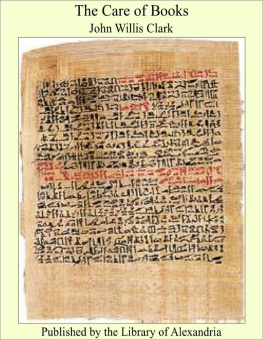


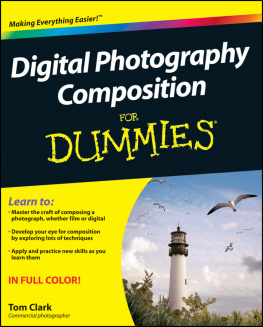

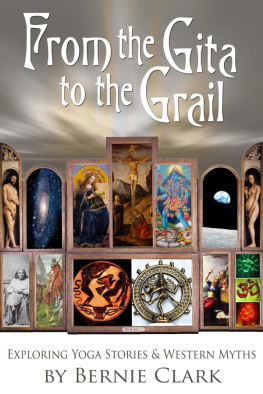



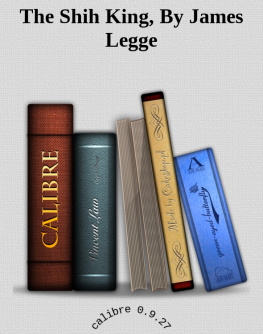
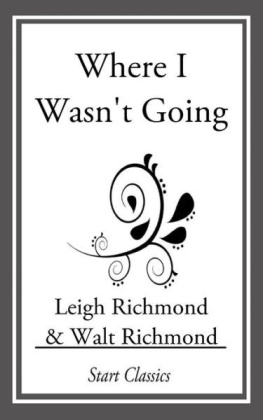



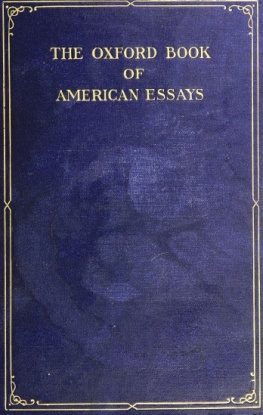
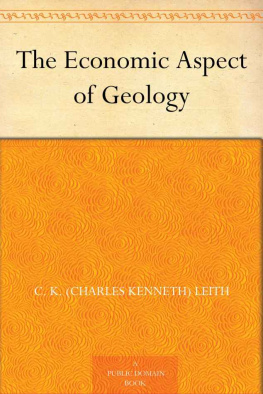

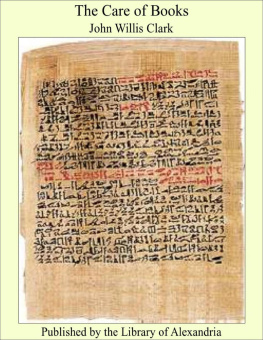
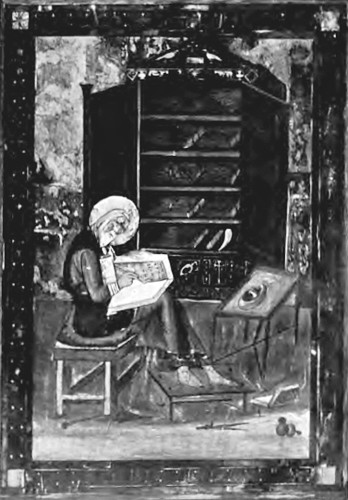 Fig. 15 Ezra writing the Law. Frontispiece to the Codex Amiatinus. In the background is a press with open doors. The picture was probably drawn in the middle of the sixth century A.D.
Fig. 15 Ezra writing the Law. Frontispiece to the Codex Amiatinus. In the background is a press with open doors. The picture was probably drawn in the middle of the sixth century A.D.
 When engaged in editing and completing The Architectural History of the University and Colleges of Cambridge, I devoted much time and attention to the essay called The Library. The subject was entirely new; and the more I looked into it, the more convinced did I become that it would well repay fuller investigation than was then possible. For instance, I felt certain that the Customs affecting monastic libraries would, if one could only discover them, throw considerable light on collegiate statutes relating to the same subject.
When engaged in editing and completing The Architectural History of the University and Colleges of Cambridge, I devoted much time and attention to the essay called The Library. The subject was entirely new; and the more I looked into it, the more convinced did I become that it would well repay fuller investigation than was then possible. For instance, I felt certain that the Customs affecting monastic libraries would, if one could only discover them, throw considerable light on collegiate statutes relating to the same subject.